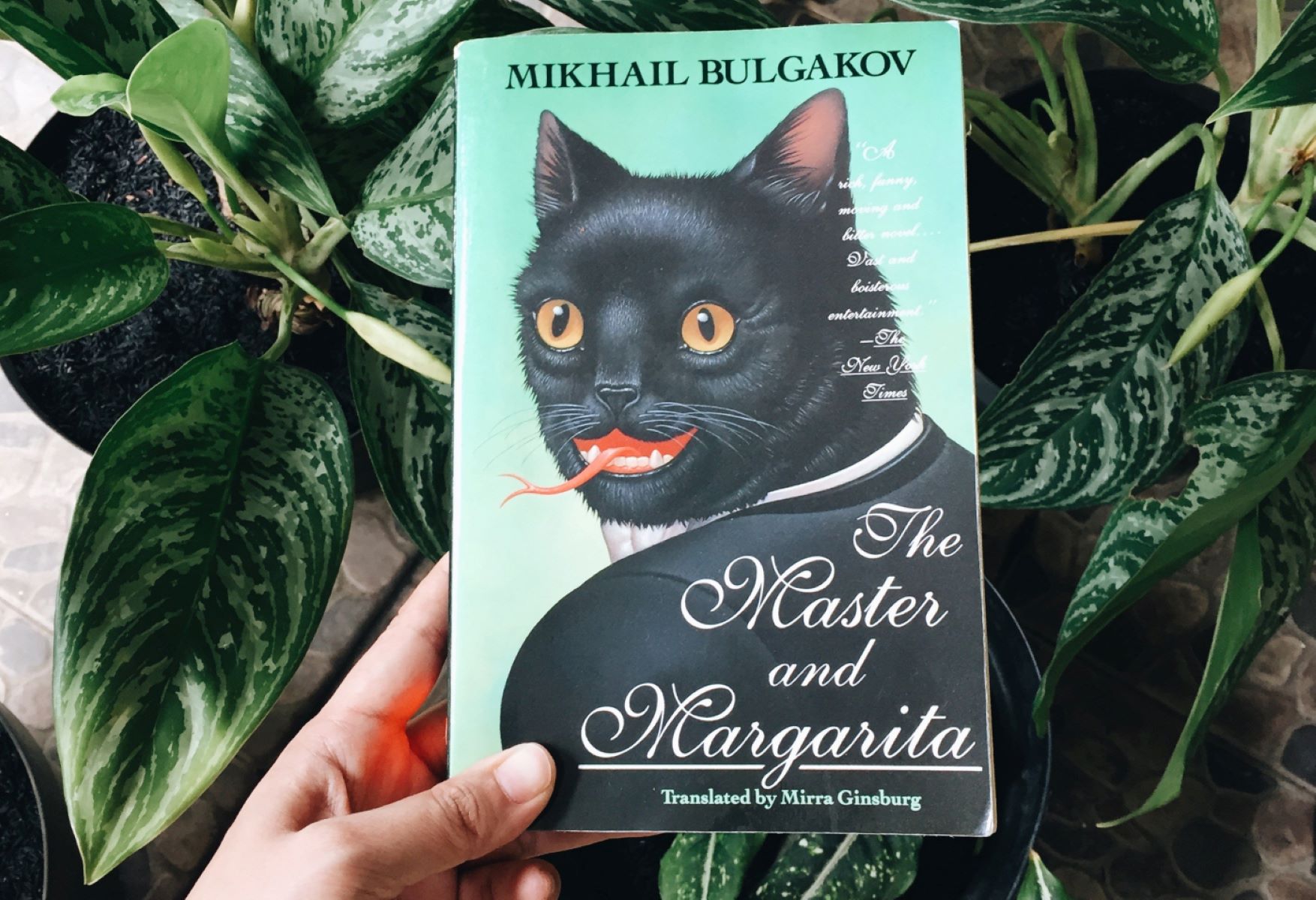
The Master and Margarita is a masterpiece by the renowned Russian author Mikhail Bulgakov. Published posthumously, this novel has captured the hearts and minds of readers around the world. Offering a unique blend of satire, fantasy, and social commentary, The Master and Margarita continues to fascinate and captivate readers of all ages and backgrounds.
In this article, we will delve into the world of this extraordinary literary work and explore 14 mind-blowing facts about The Master and Margarita that will leave you in awe. From its intriguing characters to its complex themes, this novel has much to offer. So, prepare to be amazed as we take you on a journey through the enigmatic pages of The Master and Margarita.
Key Takeaways:
- The Master and Margarita” by Mikhail Bulgakov is a famous novel that was initially banned in the Soviet Union, but later became a symbol of artistic resilience and freedom of expression.
- This extraordinary novel blends fantasy, satire, and historical fiction to explore themes of good and evil, inspiring artists and writers worldwide with its powerful storytelling and profound philosophical questions.
The Master and Margarita is Mikhail Bulgakov’s most famous novel.
Widely regarded as one of the greatest literary works of the 20th century, The Master and Margarita has captivated readers since its publication in 1966.
The novel was initially banned in the Soviet Union.
Due to its satirical and subversive nature, The Master and Margarita faced censorship and was not officially published in its entirety until 1973, seven years after Bulgakov’s death.
The Master and Margarita blends various genres.
This extraordinary novel combines elements of fantasy, satire, allegory, and historical fiction, creating a complex and multi-layered narrative that defies categorization.
The Devil plays a central role in the story.
Known as Woland, the Devil and his band of supernatural associates visit Moscow and wreak havoc on the city’s literary and cultural elite, challenging their beliefs and exposing their hypocrisy.
The character of Margarita is iconic.
Margarita, the Master’s mistress, becomes a key figure in the novel as she embarks on a transformational journey and makes a pact with the Devil to save the Master’s work.
The novel explores themes of good and evil.
Bulgakov delves into the nature of morality and the human condition, questioning traditional notions of right and wrong, and challenging the reader’s perception of good and evil.
The Master and Margarita has inspired numerous adaptations.
From stage plays to ballets, operas to films, Bulgakov’s masterpiece has been reimagined in various artistic mediums, showcasing its enduring appeal and cultural significance.
It took Bulgakov over a decade to complete the novel.
Due to censorship and various personal and professional challenges, it took Bulgakov from 1928 to 1940 to finish The Master and Margarita.
The novel contains elements of Bulgakov’s own experiences.
Bulgakov, who worked as a doctor before becoming a writer, infuses his personal observations of Soviet society and its bureaucracy into the narrative, adding depth and authenticity to the story.
The Master and Margarita is filled with memorable characters.
From the enigmatic Procurator to the mischievous cat named Behemoth, Bulgakov’s novel is populated with a diverse cast of characters that leave a lasting impression on the reader.
The Master and Margarita has philosophical undertones.
Bulgakov delves into existential questions, exploring themes of truth, freedom, and the nature of humanity, inviting readers to ponder the deeper meaning behind the events in the novel.
The novel became a symbol of freedom of expression.
Despite its initial suppression, The Master and Margarita became a symbol of artistic resilience and a testament to the power of literature to challenge oppressive regimes.
The Master and Margarita has gained international acclaim.
Translated into multiple languages, the novel has captivated readers worldwide, solidifying its status as a literary masterpiece with universal appeal.
The Master and Margarita continues to inspire and influence artists and writers.
Bulgakov’s novel has left an indelible mark on the literary world, inspiring generations of artists and writers with its bold storytelling, complex characters, and profound themes.
In conclusion, The Master and Margarita stands as a monumental achievement in literature, showcasing Mikhail Bulgakov’s remarkable talent for weaving together multiple genres and exploring profound philosophical questions. With its enduring popularity and powerful themes, The Master and Margarita continues to captivate and inspire readers across the globe.
Conclusion
In conclusion, “The Master and Margarita” by Mikhail Bulgakov is a literary masterpiece that captivates readers with its unique storytelling and thought-provoking themes. From the richly developed characters to the captivating blend of fantasy and reality, this novel leaves a lasting impression on its readers. Bulgakov’s exploration of the human condition, religious symbolism, and social satire creates a deeply immersive reading experience.”The Master and Margarita” continues to inspire and be celebrated for its literary brilliance. It has gained a worldwide following and has been translated into numerous languages, earning its place as a timeless classic. Whether you are a fan of Russian literature or simply looking for an engaging and thought-provoking read, “The Master and Margarita” is a must-read that will leave you spellbound.
FAQs
1. What is “The Master and Margarita” about?
“The Master and Margarita” is a novel by Mikhail Bulgakov that follows the devil’s visit to Moscow in the 1930s. It intertwines multiple storylines, including the tale of the Master, a writer, and his love affair with Margarita, as well as satirical commentary on Soviet society and religion.
2. Is “The Master and Margarita” based on a true story?
No, “The Master and Margarita” is a work of fiction. While the novel is inspired by real-life events and people, Bulgakov weaves in elements of fantasy and magical realism to create a unique narrative.
3. Why is “The Master and Margarita” considered a literary masterpiece?
“The Master and Margarita” is considered a literary masterpiece due to its exceptional writing, complex characters, and layered themes. It offers a profound exploration of the human condition, religious symbolism, and societal norms, making it a thought-provoking and enduring work of literature.
4. Is “The Master and Margarita” difficult to read?
While “The Master and Margarita” may have a complex narrative structure and various subplots, it is widely enjoyed by readers of different backgrounds. It rewards attentive reading and offers a truly immersive experience, making it a rewarding read for those willing to invest their time and attention.
5. Has “The Master and Margarita” been adapted into other forms of media?
Yes, “The Master and Margarita” has been adapted into films, stage plays, and even a television series. These adaptations have helped bring the story to life and introduce it to new audiences.
If you enjoyed learning about "The Master and Margarita," why not explore more fascinating topics? Dive into the world of political commentary with Jesse Watters, laugh at the clever satire of Andy Borowitz, or immerse yourself in the magical realism of "One Hundred Years of Solitude" by Gabriel García Márquez. Each subject offers unique insights and captivating stories that will keep you engaged and entertained. So, go ahead and satisfy your curiosity by reading more mind-blowing facts about these intriguing subjects!
Was this page helpful?
Our commitment to delivering trustworthy and engaging content is at the heart of what we do. Each fact on our site is contributed by real users like you, bringing a wealth of diverse insights and information. To ensure the highest standards of accuracy and reliability, our dedicated editors meticulously review each submission. This process guarantees that the facts we share are not only fascinating but also credible. Trust in our commitment to quality and authenticity as you explore and learn with us.


